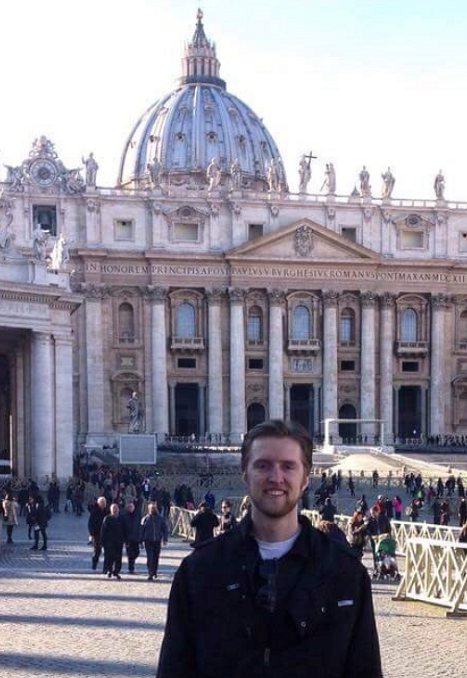The Origins and Growth of Skiing in the North Star State
 Thursday, February 3, 2022 at 3:49AM |
Thursday, February 3, 2022 at 3:49AM |  Michael Rainville Jr |
Michael Rainville Jr | Article by Michael Rainville, Jr.
 Children taking ski lessons in 1945.
Children taking ski lessons in 1945.
Skiing has been around for quite a while. It can be traced back to prehistoric times, in fact, as evidence of early skis has been uncovered in peat bogs in the northern countries of Norway, Sweden, Finland, and Russia. The word "ski" itself comes from the Old Norse word skíð, which translates to "split piece of wood or firewood." After developing over the course of thousands of years, early Norwegian and Swedish immigrants to Minnesota brought skis with them, and one of the earliest documented cases of skiing in the area happened in 1853 when a Norwegian man skied from Saint Paul to Lake Superior.
During the first few decades of people skiing in Minnesota, they were mainly being used for transportation, from delivering mail to grocery shopping. It wasn’t until 1886 when skiing for sport began to grow. It was that year when the first Saint Paul Winter Carnival took place where they had many events such as toboggining, sleigh rides, ice skating, and of course, skiing. By the time the next Winter Carnival took place, the first ski club in the state was established. Named the Scandinavian Ski Club of St. Paul, they hosted the first official tournament to be held in the United States during the winter Carnival of 1887. The winner of the event finished the one-mile course in about four and a half minutes.
The next year in 1888, Martin Strand arrived in Minneapolis from Rendalen, Norway and enrolled in the University of Minnesota’s civil engineering program. After the economy collapsed in 1893, Strand began experimenting with making his own skis as the activity was, and still is, a point of Norwegian pride. Starting out of his basement, warping wood planks with a kettle, Strand quickly mastered the craft. The abundance of trees and Scandinavians in Minnesota meant that Strand was able to make a living off his new skillset, so he began selling his skis in 1896. Three years later, he had his own shop on Cedar Avenue.
 Northland Ski Manufacturing Company current logoMartin Strand’s next shop was located at 2427 University Avenue, where the Tea House Chinese Restaurant now stands. Unfortunately, his entire operation burned to the ground, as was a common occurrence for many ski manufacturing buildings, so Strand moved his business to a new location two miles away at Hampden Avenue and University Avenue in Saint Paul. Six months later, this factory also burned down, so Strand sold what was left of his business to his foreman Ole Sigurd Ellevold. Strand started a new ski business in a brick building in New Richmond, Wisconsin, and Ellevold rebuilt a factory at University and Hampden. Ellevold’s new company was called The Northland Ski Manufacturing Company.
Northland Ski Manufacturing Company current logoMartin Strand’s next shop was located at 2427 University Avenue, where the Tea House Chinese Restaurant now stands. Unfortunately, his entire operation burned to the ground, as was a common occurrence for many ski manufacturing buildings, so Strand moved his business to a new location two miles away at Hampden Avenue and University Avenue in Saint Paul. Six months later, this factory also burned down, so Strand sold what was left of his business to his foreman Ole Sigurd Ellevold. Strand started a new ski business in a brick building in New Richmond, Wisconsin, and Ellevold rebuilt a factory at University and Hampden. Ellevold’s new company was called The Northland Ski Manufacturing Company.
 Cover of a Northland how-to-ski pamphlet from 1923.
Cover of a Northland how-to-ski pamphlet from 1923.
In 1916, Christian A. Lund, a Norwegian-born Minneapolitan, bought enough stock to gain control of the company. Under Lund’s control, Northland Skis became world-renowned. Lund took it upon himself to provide skis to Team U.S.A. during the first Winter Olympics which was held in Chamonix, France in 1924. While Team U.S.A. finished fifth in the medal count standings with four, athletes from wintery nations took note of his product. In 1927, Lund opened a factory in Hastings, Minnesota where he continued manufacturing his famous skis, toboggans, and snowshoes. Lund’s hickory skis and how-to-ski pamphlets soon spread throughout North America and Europe and are credited with helping the sport rise in popularity in the mid-20th Century.
 Christian A. Lund, 1923
Christian A. Lund, 1923
 C.A. Lund Company factory located in Hastings, MN
C.A. Lund Company factory located in Hastings, MN
After years of global success, the rise of modern skis, made of wood, fiberglass, and metal, became too much for Lund’s company and the last pair of Northland Skis were sold in 1970, five years after his passing. However, the brand has been revived as of late and picked up right where they left off, making wooden skis, now in Steamboat Springs, Colorado.
With the Saint Paul Winter Carnival in full swing, the 2022 Winter Olympics starting, and hopefully no more sub-zero temperatures, now is a great time to dust off your skis and hit the slopes of the Twin Cities or glide through the cross-country trails found in our many parks.
- - - - - - - - - - - - - - - - - - - - - - - - - - - - - - - - - - - - - - -
 About Michael Rainville, Jr.
About Michael Rainville, Jr.
A 6th generation Minneapolitan, Michael Rainville, Jr. received his B.A. in History, Graduate Certificate in Museum Studies, and M.A. in Art History from the University of St. Thomas.
